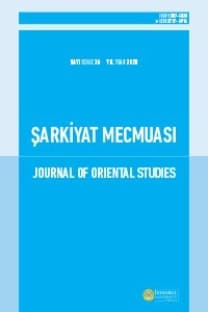WOMAN IN HEDAYAT’S “BOOF E KOOR” AND CHOOBAK’S “SANG E SABOOR”
xx
WOMAN IN HEDAYAT’S “BOOF E KOOR” AND CHOOBAK’S “SANG E SABOOR”
Hedayat, Choobak, Woman Literature,
___
- حسن محمودی، نقد و تحلیل و گزیده داستان های صادق چوبک، نشر روزگار، چاپ دوم،1382،تهران.
- محمد بهارلو، نامه های صادق هدایت، نشر اوجا، تهران، 1374.
- فریدون اکبری شلدره ای، درآمدی بر ادبیات داستانی پس از پیروزی انقالب اسالمی، مرکز اسناد انقالب اسالمی، چاپ اول، 1382 ،تهران.
- جالل آل احمد، در خدمت و خیانت روشنفکران، ج2 ،انتشارات خوارزمی، چاپ اول، .1357
- روح هللا مهدی پور عمرانی، گزیده داستان های کوتاه صادق چوبک، نشر روزگار، چاپ اول، 1378 ،تهران.
- عبدالعلی دست غیب، نقد آثار چوبک، انتشارات ایما، چاپ اول، 1378 ،تهران.
- صادق چوبک، سنگ صبور، سازمان انتشارات جاویدان، چاپ دوم، 1352 ،تهران.
- صادق هدایت، بوف کور، نشر سیمرغ، چاپ دوم، 1372 ،تهران.
- محمد بهارلو، عشق و مرگ در آثار صادق هدایت، نشر قطره، 1379 ،تهران.
- لوئیس تایسن، نظریه های نقد ادبی معاصر، ترجمه مازیار حسین زاده و فاطمه حسینی، نشر نگاه امروز و حکایت قلم نوین، 1387 ،تهران.
- محمد منصور هاشمی، نقد و تحلیل گزیده داستان های صادق هدایت، نشر روزگار، چاپ دوم، 1382 ،تهران.
- فتح اله اسماعیلی، شهرام بهارلوئیان، شناخت نامه صادق هدایت، نشر قطره، 1379 ، تهران.
- مجله فردوسی، 1346.
- علی دهباشی، یاد صادق چوبک، نشر ثاالث، چاپ اول، 1380 ،تهران.
- شاپور جورکش، زندگی ، عشق و مرگ از دیدگاه صادق هدایت، نشر آگه، تهران، 1377.
- صدرالدین الهی، مثال گپ: با صادق چوبک در باغ یادها، دفتر هنر، سال دوم، شماره3 ، .1373
- ISSN: 1307-5020
- Yayın Aralığı: 2
- Başlangıç: 1956
- Yayıncı: İstanbul Üniversitesi Edebiyat Fakültesi Şarkiyat Araştırma Merkezi
AHMED-İ ŞAMLÛ VE Şİ’R-İ SEPÎD (1304-1379 HŞ./1925-2000)
İSLAM MEDENİYETİNDE TIP TARİHİNE DAİR YENİ BİR YORUM
Prof.dr.neşet EL-HAMARİNE, Eyyüp Tanrıverdi
ARAP EDEBİYATINDA TÜRKÇE YAZAN BİR ŞAİR: EMİR MENCEK PAŞA EL-YUSÛFÎ
İHYÂ'U 'ULÛMİ'D-DÎN ESERİNDE ZİKİR VE UZLET KAVRAMLARI
The ConnotatIon of “HANEF” In the Qur’an lexIcon
MODERN ZAMANLARDA KLASİK BİR SES: AHMET FARAZ
WOMAN IN HEDAYAT’S “BOOF E KOOR” AND CHOOBAK’S “SANG E SABOOR”
